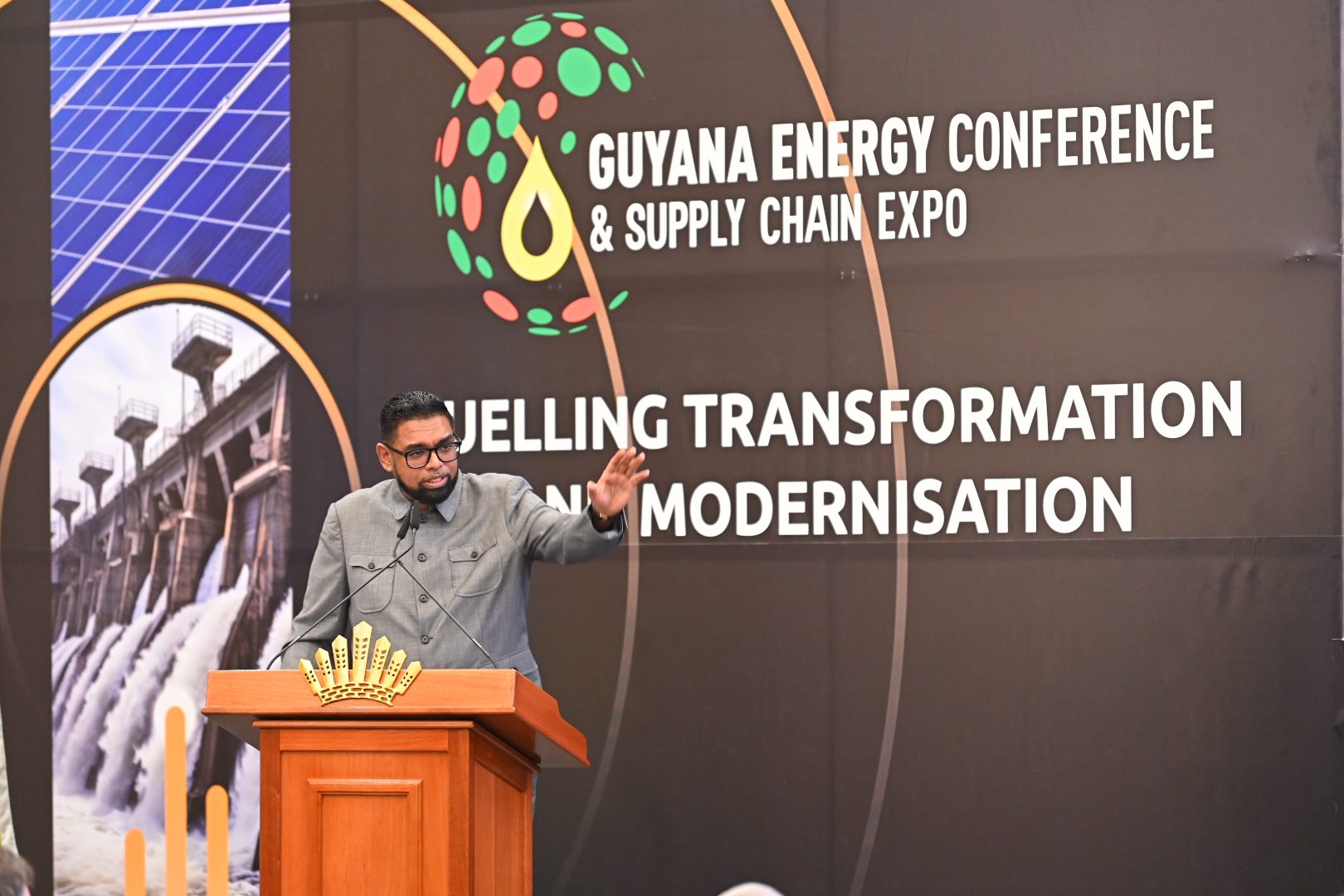Guyana’s Gas-to-Energy project has generally been marketed as a huge benefit for the domestic economy. However, the government is rolling out plans for the natural gas liquids (NGL) from the project to capture the markets of the entire Caribbean Community (CARICOM) region, Brazil’s Roraima State and the Dominican Republic.
President Dr. Mohamed Irfaan Ali discussed the plans during his address at the Guyana Energy Conference and Supply Chain Expo 2024 in Georgetown today. This is the third iteration of the massive conference, rebranded from the International Energy Conference and Expo.
The President said the tremendous interest the government is seeing from investors in the Gas-to-Energy project, makes it clear that a second plant will be needed to process the liquids that will come through the pipeline.
The first phase of the project will facilitate the transportation of only 50 million cubic feet per day (mcfd) of offshore gas through a 120-130 mcfd pipeline, providing about 4000 barrels a day (b/d) of liquids for commercialization, Ali said. He noted that the domestic economy will utilize about 800 b/d, with 3,200 b/d for export. In the second phase, Ali expects the project to provide an accumulated 10,000 b/d, with about 9,000 b/d available for export.
With this in mind, the President underscored the necessity of the transport infrastructure Guyana is pursuing for connectivity with Brazil’s Roraima State and Suriname. Guyana is building a road connecting the Guyana coast to Brazil, including 45 bridges, Ali said. Guyana and Suriname also plan to build a bridge over the Corentyne River.
“If we don’t have it, we will sit on 9,000 barrels of [NGLs], and it can’t hatch,” Ali said, responding to critics of Guyana’s massive transport infrastructure agenda.
The Gas-to-Energy project is expected to achieve first gas in 2025.
Guyana is also advancing the drafting of a natural gas strategy which will provide a roadmap for the advancement of Guyana’s gas development plans. The government had published a request for proposals (RFP) for gas development and transport, urging investors to look not only at opportunities from the Gas-to-Energy project but also at potential future development of non-associated gas.
ExxonMobil has proven the presence of 17 trillion cubic feet of gas in the Stabroek block and plans to appraise its gas finds over the next few years.



